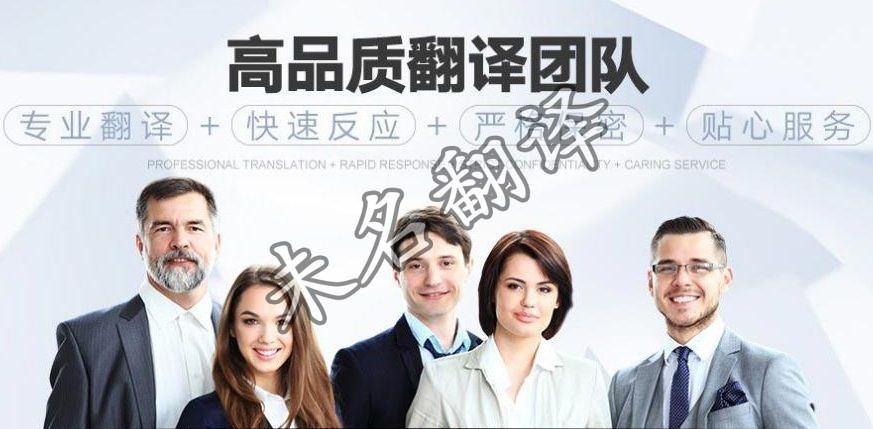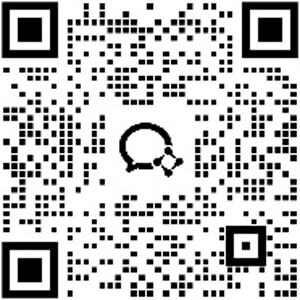近几年因为新冠疫情的影响,人们越来越关注医药的研发上市等事项,各个医药公司更是加大了医药研发的力度,医药学领域的国际交流也日益频繁,医药学翻译的需求也不断增加。但是医药学翻译是一项专业性极强的工作,未名翻译公司作为专业的翻译公司带大家了解一下医药学翻译的知识。
医药学翻译注意事项
1、需要专业翻译公司进行翻译
因为医药学翻译工作对专业性要求比较高,通常自己是没有办法翻译的,如果想避免在工作中出现疏漏问题,避免出现翻译不完整等情况,建议要选择专业的翻译公司来从事翻译工作,不仅让原文的意思得以体现,还能让专业术语的翻译效果更精准,避免在翻译内容上出现很大的偏差。
2、需要保障译文的专业严谨性
为了确保医药学翻译内容更加精准,尤其是让专业术语的呈现更为自然,避免出现翻译偏差,要保证在翻译内容上更加专业严谨,否则会很难完成翻译工作,对于医药领域的专业术语,还有医学知识的内容,都要有一些了解,这样才能让翻译的主体内容得到更精准的呈现。

3、应该注意语言表达习惯
医药学翻译要注意语言表达习惯,运用合理的翻译方法,让每一个词汇以及语句的表达更自然,呈现出更自然衔接的和谐效果,每一句话的衔接没有任何差错,每个专业词语的翻译都更为精准,这样才能避免表达不完整的情况,采用适当增加删减的方式,让行文表达更为流畅。
医药学英文翻译常见词汇
Resuscitation 复苏术
Assessment 评估
Assess the client's unresponsiveness by shaking the client and shouting, "Are you OK?" 摇病人或呼叫病人,评估病人反应程度。
Implementation 实施
1. Activate the emergency medical services according to hospital policy and procedure 根据医院规定和操作程序起动急诊治疗。
2. Observe for chest movement; listen and feel for breaths. 观察胸部有无运动,听、感觉病人呼吸。
3. If client is breathing and no trauma is present, place client in the recovery position. 如病人有呼吸、无外伤,将病人置于恢复位。
4. If no respirations are detected, call for assistance. 如无呼吸,寻求协助。
5. Place victim on hard surface, such as floor or ground, or use the backboard found on the resuscitation cart or the headboard of the hospital bed. If the client must be moved to the supine position, use the log-rolling technique to maintain spinal integrity. 将患者置于硬面上,如地板或地面,或采用救护车上的底板或病床床头板。如需将病人移至仰卧位,可采用滚木手法以保持脊柱完整。
6. Correctly position for resuscitative efforts. 复苏时正确体位:
A. One-person rescue: face client while kneeling parallel to the client's sternum. 单人救护:面向病人,跪膝与病人胸骨平行。
B. Two-person rescue: one person faces client while kneeling parallel to the client's head. Second person is on the opposite side parallel to the client's sternum. 双人救护:一人面向病人,跪膝与病人头部平行;一人于病人另一侧,与病人胸骨平行。
7. Open the airway. 打开气道
A. If no head or neck trauma is suspected, use the head-tilt, chin-lift method. 如无头世颈外伤,可采用侧头、抬头举颏法。
B. If head or neck trauma is suspected, use the jaw-thrust maneuver only. Grasp angles of client's lower jaw and lift with both hands, displacing the mandible forward. 如疑有头或颈部外伤,只能采用双手托颌法。双手抓住病人下巴尖,抬起,按住前额后仰。
8. Mouth-to-mouth artificial respirations: 口对口人工呼吸
A. Adult: 成人
a. Pinch client's nose with thumb and index finger and occlude mouth with rescuer's mouth or use CPR pocket mask. Attempt two slow breaths, 1 1/2 to 2 sec per breath. 用拇指和食指捏住病人鼻子,抢救者张口封住病人口唇,也可使用CPR袖珍面罩。先行两次慢呼吸,每呼吸1.2至2秒。
b. The rescuer should take a breath after each ventilation. 每次人工呼吸后抢救者都应吸一口气。
c. Allow the client to exhale between breaths. 两次呼吸间应允许病人呼气。
d. Continue with 12 breaths per minute. 继续人工呼吸,每分钟12次。
B. Child (1 to 8 years of age): 儿童(1-8岁)
a. Pinch the victim's nose tightly with thumb and forefinger. Place rescuer's mouth or CPR pocket mask over client's mouth, forming an airtight seal. Give two slow breaths, 1 to 1 1/2 sec per breath. 用手指和食指捏紧患者鼻子。抢救者用口或CPR袖珍面罩封住病人口唇,形成一个密闭气道。先行两次慢呼吸,每次1-1,5秒钟。
b. Pause after the first breath to take a breath. 每一次呼吸后稍停,吸气。
c. Continue with 20 breaths per minute. 继续人工呼吸,每分钟20次。
C. Infant: 婴儿
a. Place the rescuer's mouth over the infant's nose and mouth, forming an airtight seal. 抢救者口封住患儿鼻、口,形成一密闭气道。
b. Give two breaths slowly at 1 to 1 1/2 sec per breath. 行两次慢呼吸,每呼吸1-1.5秒。
9. Continue with 20 breaths per minute. 继续呼吸,每分钟20次。
10. Ambu bag artificial respirations: 急救袋人式呼吸
All ages: 所有年龄
A. Connect oxygen supply tubing to Ambu bag and oxygen flowmeter. Adjust oxygen to 高 FiO2 or ordered rate. 将供氧管与急救袋和流量计相连,将氧气调节至高吸氧浓度分数或规定速度。
B. Insert oropharyngeal airway. 插入口咽导气管。
C. Position the face mask of the Ambu bag over the client's mouth and nose. 将急救袋面罩置于患儿口、鼻。
D. Give slow breaths by squeezing the bag. 捏挤急救袋行慢呼吸。
E. Allow time for client to exhale. 留出病人呼气时间。
11. If ventilation attempt is unsuccessful, reposition the client's head and reattempt rescue breathing again. If ventilation attempt remains unsuccessful, the airway may be obstructed by a foreign body that will need to be removed. 如人工勇气失败,重新放置病人头部,再次开始抢救呼吸。如再次失败,气道可能有异物堵塞,需要去除异物。
12. Suction secretions as needed or turn client's head to the side if no trauma is suspected. 必要时吸痰或将病人头侧向一侧(如无损伤)。
13. Check for the presence of carotid pulse in adult and child or brachial pulse in infant. Feel for 3 to 5 sec. 检查脉搏:成人及儿童测颈动脉,婴儿测臂动脉。3-5秒。
14. If no pulse, initiate chest compressions. 如无脉搏,行胸外按压法。
A. Adult: Place heel of hands, one atop the other, on lower third of the sternum. Lock elbows and maintain shoulders in line with sternum. 成人:两手相叠,手掌放于第三胸骨处。双肘关节伸直双肩与胸骨对齐。
B. Child: Place the heel of one hand on the lower half of the sternum. 儿童:将一手掌根放于下1/2胸骨处。
C. Infant: Place two or three fingers on the lower half of the sternum just below the level of the infant's nipples. 婴儿:将2-3根手指放于下1/2胸骨处,婴儿乳头下方。
15. Compress chest downward to proper depth and then release. Maintain constant contact with skin. 向下按压胸部至适当深度,放松。始终保持与皮肤接触。
A. Adult: 1 1/2 to 2 inches ( 4 to 5 cm) 成人:按压时下陷1.5至2吋(4-5 cm)
B. Child:1 to 1 1/2 inches (2.5 to 4 cm) 儿童:按压时下陷1至1.5吋(2.5-4 cm)
C. Infant:1/2 to 1 inch (1 to 2.5 cm) 婴儿:按压时下陷0.5-1吋(1-2.5 cm)
16. Maintain correct ratio proportionate to number of rescuers: 按抢救人数保持正确速度。
One rescuer: 15 compressions, 2 breaths 单人:2次呼吸按压15下
Two rescuers: 5 compressions, 1 breath 双人:1次呼吸按压5下
A. Adult: minimum of 80 to 100 compressions per min 成人:较少80-100次/分
B. Child: minimum of 100 compressions per min 儿童:较少100次/分
C. Infant: minimum of 100 compressions per min 婴儿:较少100次/分
17. Continue artificial respiration. 继续人工呼吸
18. Monitor the adequacy of the compressions during two-rescuer CPR with palpation of the carotid (adult, child) or brachial (infant) pulse during compressions. 双人胸外按压时扪摸颈动脉(成人或儿童)或臂动脉(婴儿)监测按压是否适当。
19. Continue CPR until the rescuer is relieved, client regains cardiopulmonary function independently, or physician directs that CPR be discontinued. 继续行CPR,直到有人替换,或病人恢复自主心肺功能,或医生指示中止CPR。
20. Use Completion Protocol. 采用标准完成程序。
Identify Unexpected Outcomes and Nursing Interventions 确认意外结果与护理措施。
Record and Report 记录与报告
1. Onset of arrest. 停搏时间
2. Location. 部位
3. Actions taken. 采取的行动
4. Client response. 病人反应

以上内容就是未名翻译为大家分享的关于医药学翻译的知识。未名翻译公司是一家正规、专业的翻译公司,如果您有医药学翻译的需求,都可通过未名翻译公司官网的在线客服咨询,未名翻译会为您提供专业的翻译服务。
<本文内容由未名翻译公司独创发布,可学习参考,如未经允许作商业用途,转载必究。>



